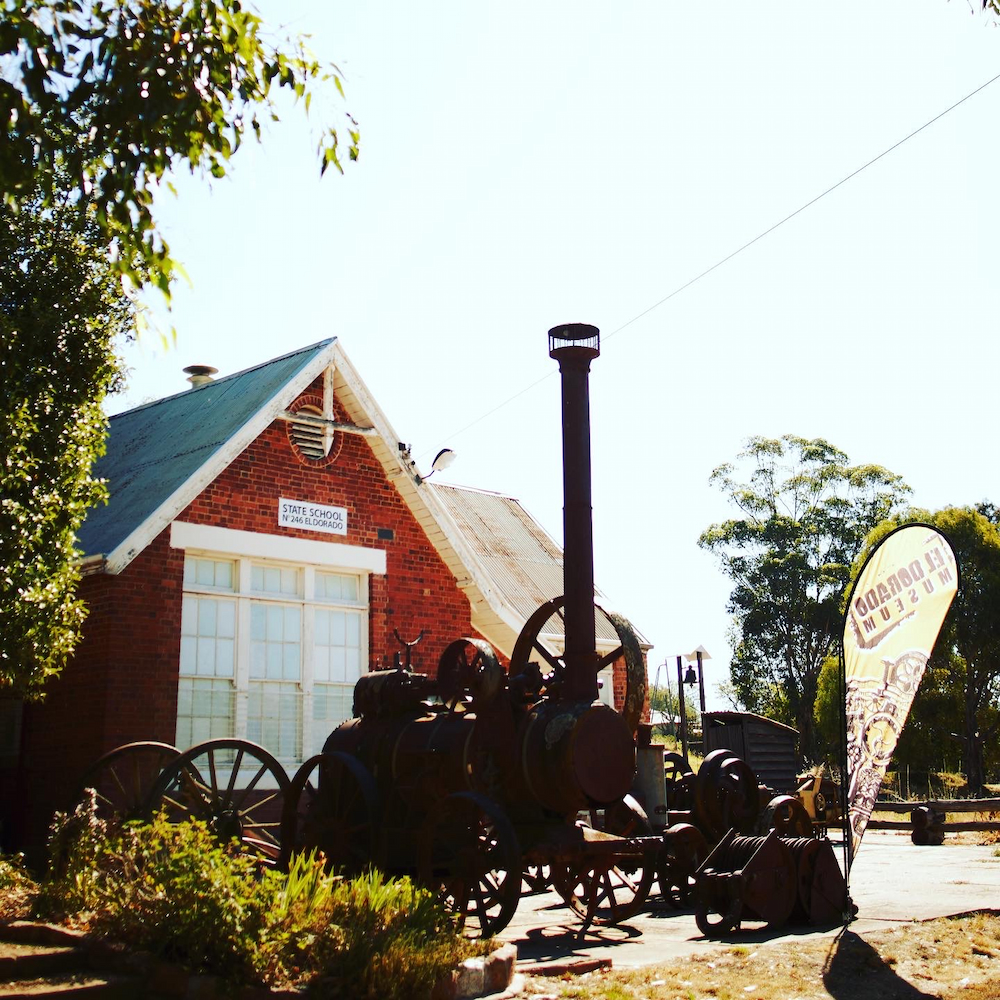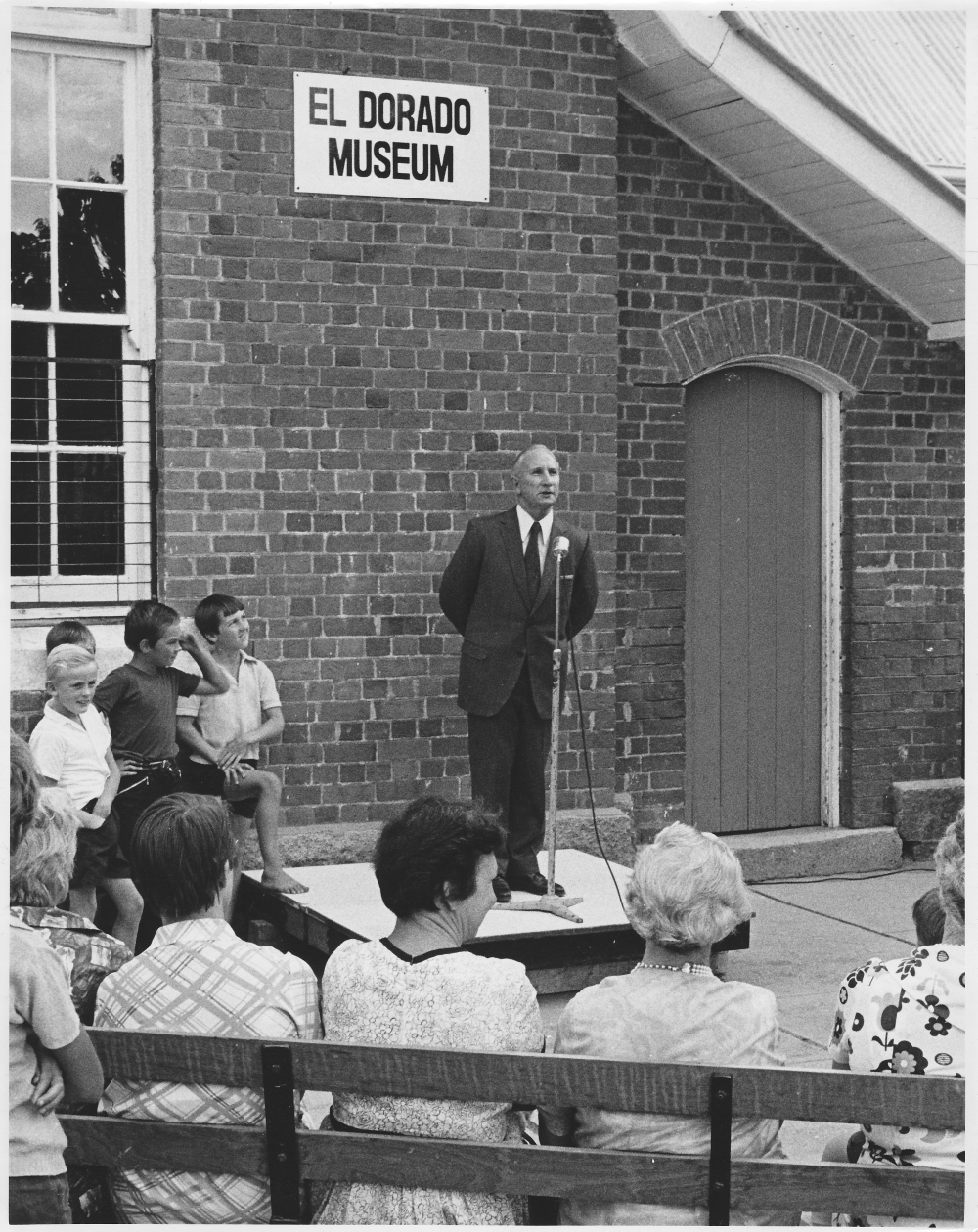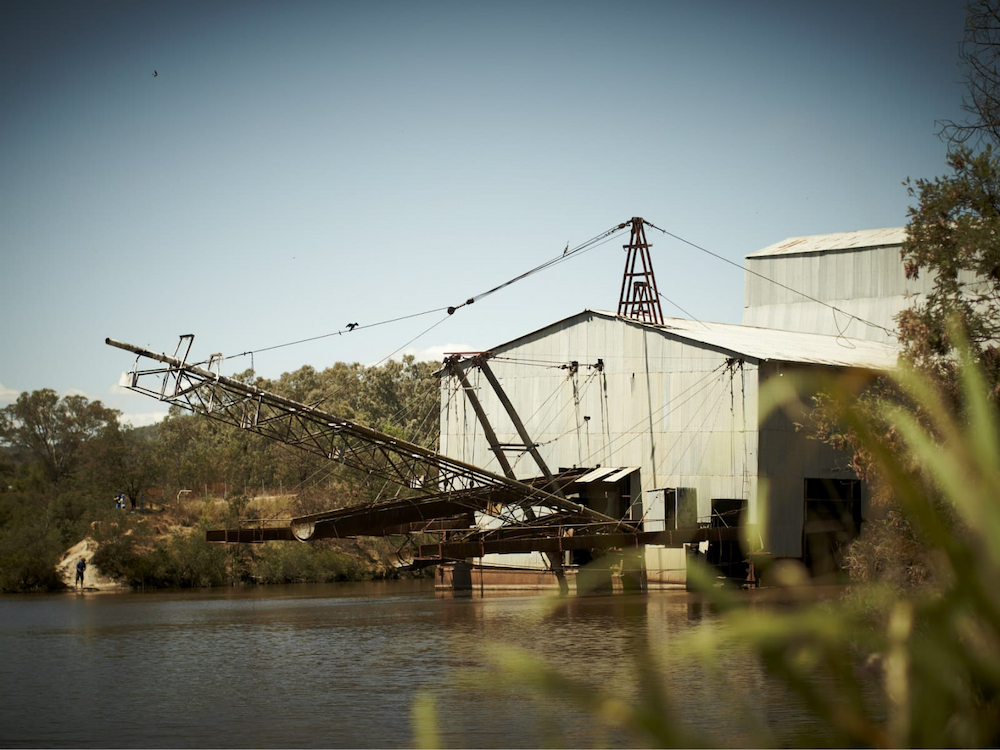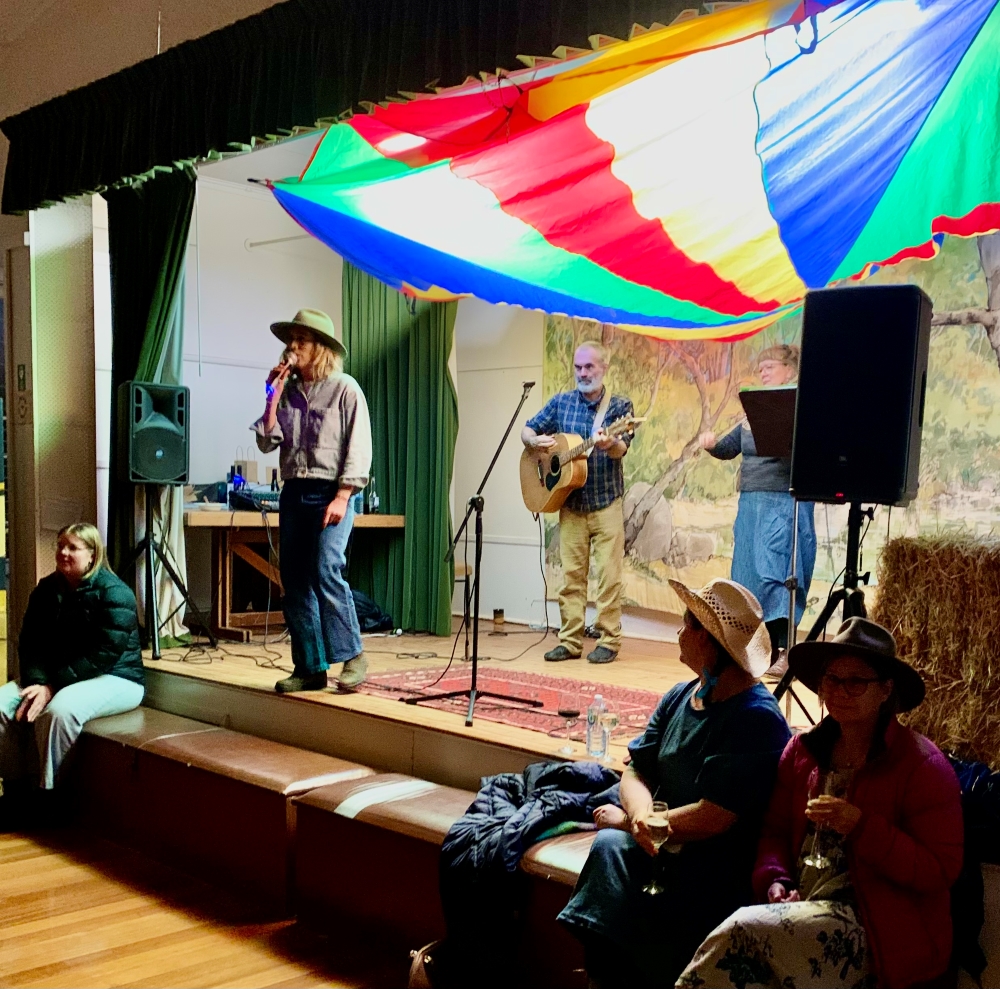
The El Dorado Museum Trust (now El Dorado Museum Association Inc.) was established in 1966 with a mission to rescue the building and establish a museum.
The spelling of the town Eldorado or El Dorado varies, with Eldorado being increasingly used in recent times (including by the Australian Bureau of Statistics) but the original town name was El Dorado. The other Crown land reserve committee of management in the town is Eldorado Centennial Park Committee Incorporated.
Local history published on the About El Dorado section of the El Dorado Museum website suggests that the reason El Dorado is spelt as one word (Eldorado) is due to an error made in Melbourne when the area was gazetted in the 1950’s.
Eldorado (2021 Census population for 382) is 20km northeast of Wangaratta and 30km (by road) from Beechworth around the southwest part of Chiltern-Mt Pilot National Park. Eldorado is on Yorta Yorta Country and in the local government area of Wangaratta.
In Spanish, El Dorado means “the golden” and is commonly associated with the legend of a gold city, kingdom, or empire. In 1839 William Baker travelled from NSW and took up his ‘Barambogie run’ near Chiltern calling the homestead ‘El Dorado Park’. It was more than a decade later in the 1850’s when El Dorado became a thriving gold rush town.
The old brick school was built in 1869 with about 140 students at that time. An earlier weatherboard school had been operating since 1861. When the Compulsory Education Act was passed in 1872, student numbers increased over the next few years to around 450. An extra room was added to the school to cater for the increase in numbers. Eldorado’s overall population in 1875 was estimated at 3,000+.
Over the years, the school building was used for various community activities including dances and euchre parties (card nights).
In the 1890’s with population declining after the gold rush, half of the school was converted into a teacher’s residence. In the 1920’s the classrooms were remodelled and during the 1960’s plans were established to build a new school on land adjacent to the old school.
At different times, the old school was known as Eldorado School, Eldorado Common School or Eldorado State School. The new school building opened next door in 1967 and the name changed to Eldorado Primary School in 1970. In the 1990’s, the school was combined with Tarrawingee Primary School to form Tarrawingee Area Primary School.
The El Dorado Museum Trust (now known as El Dorado Museum Association Inc.) was established in 1966 with a mission to rescue the old school building from demolition and establish a museum. The Education Department agreed to hand over management to the Museum Trust and in subsequent years, volunteer members of the Trust began the museum collection. In 1969 the Museum opened to the public, followed by an “official” opening in 1971.

1971 El Dorado Museum official opening
The Museum is managed by volunteers and self-funded through door takings, donations and grants. Most of the museum’s items have been donated with some on loan from residents and former residents of the town and broader district.
The El Dorado Museum website outlines that the Museum “holds an interesting and diverse collection reflecting the life and times of the region from 1850s to the 1950s. Displays of mining, farming and social history of El Dorado and surrounds are housed in the old school building along with a number of farming implements and outdoor displays.”
The Museum welcomes visitors on Sundays and most public holidays with additional viewing times available by appointment. They also provide educational tours for schools and community groups.
Sue Phillips got involved when the committee of the time decided to step down in 2008, prompting her to take on the role of President to keep the Museum operational. She has been in the role ever since.
Reflecting on her tenure, Sue says that in addition to the witnessing people’s appreciation of the general collection, one of the most rewarding aspects has been seeing many people visit the Museum for family history research. The Museum includes school, cemetery and church records for viewing, along with photos and books, including 'El Dorado Gold – An Australian Story' edited by Sandra Buchan. There is also a DVD titled '100 Years of Cocks El Dorado Dredge' for both viewing and purchase.
The Cocks El Dorado Dredge operated from the early 20th century until the 1950s. The dredging machine was one of the largest dredges in the Southern Hemisphere, extracting gold and tin concentrate. The Museum collection showcases the technological innovation of the dredge and its profound impact on the town's economy and community. The dredge can be viewed on the outskirts of the town on the El Dorado-Byawatha Road.

El Dorado Dredge
Sue fondly remembers various milestones and events, including the 80th celebration of the dredge in 2016 when many people came back to reminisce. Another highlight was the securing of a grant to install historic information panels about Woolshed Valley, a popular but lesser-known drive from Beechworth to Wangaratta.
Fundraising is an ongoing challenge for the committee. In 2024 the museum held a bush dance fundraiser which was a huge success and saw great community involvement.
Sue admits that one of the greatest challenges in her role has been rallying community volunteers. With the town’s ageing demographic, it is becoming increasingly hard to find new volunteers with the time available to assist.
For those curious about El Dorado's fascinating history—whether it's exploring the mining legacy, discovering the intricate workings of the Cocks El Dorado Dredge, or delving into personal family histories—the museum and the Eldorado community stand ready to welcome you to their town.

2024 bush dance fundraiser
Written by DEECA staff member Katie Heath with thanks to Sue Phillips for information and enthusiasm!
Page last updated: 05/11/24